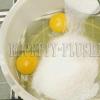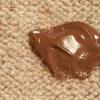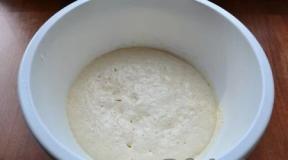Iodized salt for normal thyroid function.
Why is iodized salt present on our tables? Is its benefit justified? And what alternative options for obtaining iodine are there?
How to find out about iodine deficiency?
Iodine is an important and irreplaceable component of the human body. He is an irreplaceable participant in the formation of thyroid hormones, the so-called thyroid hormones. The synthesis of these hormones has a greater or lesser effect on all organs and systems of the body, as well as on protein, fat, carbohydrate metabolism, and even on thermoregulation. Not from iodine itself, but from its participation in the formation of other substances by the body itself (the same hormones), depends on the energy and cheerfulness of a person, his physical health and even intellect. Numerous studies have proven that iodine has a direct effect on mental development. Lack of iodine in a child's body and during pregnancy is an irreparable mistake in the diet.
Iodine deficiency is diagnosed all over the world, but it will be greater in regions outside the sea. In the diet of residents of which sea fish and seafood are rare guests. Especially people with a meager diet should think about the prevention of iodine deficiency. It is better not to go into prophylaxis on your own, and if there are visible signs of iodine deficiency, it is better to seek professional diagnostics.
The fact that your body lacks iodine may be indicated by the following symptoms:
- immune group
- weak immunity,
- constant exposure to infections, colds, chronicity of any disease;
- edematous group
- swelling around the eyes
- swelling of the limbs,
- the use of diuretics only aggravates the symptoms;
- gynecological group
- menstrual irregularities,
- cracked nipples
- in a neglected form - early menopause and, consequently, infertility,
- cardiological group
- increased diastolic (lower) pressure,
- arrhythmia,
- atherosclerosis,
- ineffectiveness of any measures for the treatment of the above conditions, since the problem of iodine deficiency is not solved
- hematological group
- decrease in hemoglobin levels
- endocrinological group
- an increase in goiter,
- hormonal disorders;
- emotional group
- unreasonable, spontaneously developed irritability, not characteristic of a person in character and temperament,
- forgetfulness and memory problems,
- deterioration of attention and reaction,
- prolonged depression
- decreased vitality,
- drowsiness and general lethargy of the body.
Symptoms like these, as well as their combination, can indicate other abnormalities. Therefore, you should not rush to solve the problem yourself. In order to make sure that iodine deficiency is true, profile diagnostics and appropriate laboratory tests are shown.
How to make up for iodine deficiency?
If iodine deficiency is diagnosed by a physician on the basis of laboratory tests, if there is a specific diagnosis, then professional treatment is prescribed.
For preventive purposes, most of us, due to environmental problems, due to the lack of iodine-containing foods in the diet, should give preference to iodized foods. They accumulate iodine well if the soil is enriched with appropriate fertilizers, such fruits as:
- apples,
- grape,
- Cherry,
- plums,
- apricots,
- beet,
- leafy salads,
- tomatoes,
- carrot.
Something similar can be said about cheese, cottage cheese, milk. If the animal feed contains enough biologically active additives, then the resulting food products will be a generous source of iodine necessary for a person.
You can search for appropriate products in eco-shops, or you can grow yourself if you have experience in farming. In large retail chains, products of vegetable gardening and animal husbandry enriched with iodine are usually not found.
What is useful from this point of view, you can buy in the store? Manufacturers of food products for mass consumption, on the recommendations of representatives of the Ministry of Health of a particular state, can enrich such products with potassium iodides and iodates as:
- flour and bread,
- dairy products,
- and the most common example is iodized salt.
 Another iodine-rich commodity that you can find on the shelves is seafood. Sea fish, algae (in particular kelp), shellfish, shrimp. Japanese cuisine is rich in iodine due to the use of fish, seafood, and a wide variety of algae in dishes.
Another iodine-rich commodity that you can find on the shelves is seafood. Sea fish, algae (in particular kelp), shellfish, shrimp. Japanese cuisine is rich in iodine due to the use of fish, seafood, and a wide variety of algae in dishes.
If desired and for certain indications (children's age and high school loads, pregnancy, scarcity of the daily diet, etc.), biologically active additives (usually made from seaweed), special iodine-containing preparations (for example, Iodomarin) will be appropriate. Individual iodine prophylaxis involves the use of prophylactic drugs and food supplements that ensure the intake of the minimum required amount of iodine. To effectively overcome iodine deficiency, it requires sufficient education and motivation from the patient, since iodine intake should be dosed, taking into account the age-related need for a trace element and the degree of existing iodine deficiency in the region.
Group iodine prophylaxis involves the intake of iodized food and / or Iodomarin 100/200 population groups with the highest risk of developing iodine deficiency diseases (children, adolescents, pregnant and lactating women).
What is iodized salt?
Examining the assortment of store counters on some packages of salt, you can see the inscription "iodized". The conclusion immediately suggests itself that this product contains iodine, and in fact very often it is this microelement that the body does not receive. The hand immediately reaches for the package iodized salt, and we are calm that we have provided ourselves with the daily need for iodine.
What is iodized salt? This is an ordinary food or table salt, the composition of which is supplemented with iodide and potassium iodate. These components are inherently acidic salts formed during the interaction of iodic acid and potassium metal. Salt is the most popular iodized product, though not the only one. But it is salt in a small but constant amount that we use every day. It is assumed that this is how the body can regularly receive the necessary portion of iodine.
One time good iodized salt was considered undeniable. In recent years, a certain skepticism has begun to appear both among the population and in the professional environment. How is salt iodized and iodine not evaporated? How much iodine, along with salt, is it permissible to consume daily? Are iodine-containing components added to salt actually beneficial rather than harmful?
Salt iodization has been known to the food industry for years and decades. During this time, the process has been constantly improved. The choice of an iodizing supplement for edible salt fortification is determined by several factors:
- the available technology for iodizing salt,
- the origin of the salt, which means its quality (the presence of impurities),
- the type of salt packing, which affects the volatility of iodine-containing substances,
- recommended shelf life of salt, etc.
Initially, potassium iodide was used to iodize salt, but the technology required improvement. Due to the fact that potassium iodide is not highly stable (it evaporates both during storage and during cooking), it enters into some chemical bonds with impurities of lake and rock salt, which is why it simply does not have time to be absorbed by the body. The term of sale of such a product cannot exceed 3 months. Iodized salt potassium iodide should be added to an already prepared dish, since the temperature effect destroys the component. Such salt is usually not suitable for preserving vegetables - although it will not harm them, it will change color, which is very unsightly.
Subsequently, potassium iodide in the iodized salt was supplemented with potassium iodate. Potassium iodate is preferred over iodide for salt iodization because:
- high resistance in salt crystals,
- less reaction with salt components,
- longer shelf life of iodine in salt (up to 12 months),
- the taste and color of the dishes does not change, and the iodate does not evaporate during the temperature treatment of the product, which means that the salt is suitable for preservation and cooking.
If the salt contains potassium iodide, then it must be protected from exposure to air, and if potassium iodate, then from moisture. When choosing iodized salt, give preference to a product of the "extra" group (fine grinding), this keeps iodine in its composition longer.
The range of consumption of iodized salt is very small (on average from 5 to 10 g per day), which, however, does not differ from ordinary salt.
 Price iodized salt almost does not differ from non-iodized (5-10% more expensive), since iodization technology is cheap and simple, but provides a quick effect.
Price iodized salt almost does not differ from non-iodized (5-10% more expensive), since iodization technology is cheap and simple, but provides a quick effect.
Restrictions on the use of iodized salt
Doctors from all over the world are sounding the alarm that the population is suffering from iodine deficiency. Despite the fact that the daily requirement for iodine is 150 mgq, we consume 40-80 mcg of iodine per day along with food. A lot of this element is found in seafood, in some vegetables, fruits, animal products, provided that animals received iodine with food, and plants - with fertilizers.
It would seem to season iodized salt each dish is needed to the maximum. But no. If salt is iodized with potassium iodide, then the proportion is 23 + 11 mg per 1 kg of salt, and if with potassium iodate, then at the rate of 40 + 15 mg per 1 kg of salt. According to experts, it is these ratios that make it possible to provide the body with the necessary amount of iodine from a normal portion of salt of 5-10 grams per day on a daily basis. This does not mean that salt alone is sufficient to meet the iodine requirement. The relevance of seafood and seaweed on the table is still justified.
It is almost impossible to oversaturate the body with iodine from iodized salt. In order to feel oversupply and poisoning, you will have to eat up to 50 grams of salt per day.
But there are a number of contraindications for use. iodized salt permanently:
- thyrotoxicosis (increased thyroid function),
- thyroid cancer
- tuberculosis,
- nephritis and nephrosis,
- furunculosis,
- chronic pyoderma,
- hemorrhagic diathesis,
- hives.
Today, various nutritional supplements have become favorites in almost every kitchen. And iodized salt remains one of the most popular. Designed to be an effective prophylactic agent and to compensate for iodine deficiencies, this food supplement does its job well.
But not everyone knows when it is really needed. And even fewer people understand why iodized salt is not allowed and under what circumstances it becomes harmful.
When iodized salt is beneficial
Iodized salt contains only two components: sodium chloride and iodine. If everything is clear with the first substance - this is ordinary table salt, then with the second it is a little more complicated.
Iodine is one of the substances vital for the proper functioning of the entire body. Many believe that only the work of the thyroid gland depends on this chemical element. This statement is not entirely true. This organ is responsible for regulating many processes in the human body, therefore, dysfunctions of this gland will inevitably affect the general state of health and even intelligence.
Therefore, iodized salt for the thyroid gland (and therefore for health in general) is useful under the following circumstances:
you live in an iodine-deficient region(information about this can be obtained on the SES website, in regional publications or by contacting your doctor);
you use only high quality salt, the composition of which meets all the declared characteristics;
you control the daily amount of salt that you consume;
your diet is generally balanced and contains all the substances the body needs.
When these conditions are present, iodized salt will be a useful addition to the diet and will help prevent thyroid diseases and their complications.
But in a number of cases it is worth considering whether "enriched" salt is really needed and whether it will be harmful to health.
Why iodized salt is not allowed: what is its harm
The greatest risk when consuming iodized salt is that the product does not meet the characteristics declared by the manufacturer.
With an average daily requirement of an adult for iodine (150 mcg), it is enough for him to consume 0.5 tsp. salts containing this chemical element.
But when assessing the quality of such salt in laboratory conditions, it often turns out that the amount of iodine is 2 or even 3 times lower than the declared one.
In practice, this will mean the following. As long as you add iodized salt to your food, confident that you are meeting your body's need for iodine, iodine deficiency continues to "build momentum."
In this sense, the harm of iodized salt can be called conditional - it does not cause direct harm to health, but only "deceives", forcing them to consider themselves useful.
But this is what makes such salt really dangerous - harmful impurities. So, when checking some brands in iodized salt, traces of arsenic, lead, mercury and other chemical compounds harmful to human health were revealed.
How to use iodized salt correctly
These facts do not make the use of iodine-fortified salt prohibited. They make a careful approach to the choice of this product necessary. And if you also listen to the following recommendations, iodized salt will definitely benefit:
in case of hypertension and kidney diseases, it is better to replace part of the iodized salt with products that naturally contain iodine (seaweed, walnuts, apples with seeds);
There can be many reasons why iodized salt is not very popular today. We have reviewed the main myths associated with the use of this extremely useful product, in the prevention of iodine deficiency.
Myth # 1: Iodine deficiency is not dangerous
Even a small iodine deficiency can lead to asymptomatic thyroid dysfunction and decreased thyroid hormone production. Especially often thyroid disorders occurwhen the need increases sharply: with this trace element, the expectant mother needs... With a deficiency of iodine in her body, the risk of severe disturbances in the growth and development of the child increases. A child with iodine deficiency will perform worse in school, especially in exact disciplines where it is necessary to think abstractly. Now imagine for a second what poor academic performance can lead to. These are communication problems, and difficulties with choosing a profession, and low earnings, and a lack of career prospects.
Myth # 2: If I didn't have enough iodine, I would notice.
Pronounced symptoms of iodine deficiency appear only if the body does not systematically receive this trace element in the required amount. Then the doctor diagnoses "endemic goiter". In all other cases, a person experiences the so-called latent, that is, iodine deficiency is asymptomatic. Of course, the person will not pay attention to the problem that is actually the cause of the decline.adult andlevel of development child.
Myth number 3: With the help of the "iodine grid" you can determine if there is a lack of iodine in the body
No connection between the rate of tarnishing of the iodine mesh on the skin andin the body, no. Currently, there are no reliable laboratory methods for determining iodine deficiency. The only one available is urinalysis. Almost 90% of iodine entering the body with food is excreted through the kidneys in the urine.
Myth number 4: Seafood is expensive, it is better to buy sea salt, because there is also iodine
Despite the fact that salt with a small amount of iodine is obtained from seawater, this iodine almost completely disappears during evaporation, purification and drying. For example, one gram of sea salt contains about 1 μg of iodine, and iodized salt contains 40 μg. It is better to buy iodized sea salt - it combines the peculiarities of the taste of sea salt and the benefits of iodized salt.
Myth 5: If you eat a lot of iodized salt, you will overdose.
Even if you consume more salt, iodine overdose will not happen: for this you need to eat almost 50 g of salt per day, and such oversalt will simply make the food inedible.

Myth # 6: Iodized salt cannot be used for cooking hot dishes, because when heated, all iodine disappears
Under the influence of high temperature, only a partial loss of iodine occurs: from 20% to 50%. The remaining iodine in cooked products is quite enough, because iodine is added with a certain reserve during the production of iodized salt.
Myth # 7: It makes no sense to use iodized salt for baking bread
In fact, iodine, which is used to fortify salt, has heat-resistant properties, therefore, when baking baked goods, about 70% of this microelement is retained. And since bread is a product of mass consumption, and the period of its sale is relatively short (up to 5 days), there is no loss of iodine during storage and during the sale.
Myth # 8: Iodized salt cannot be used for home canning, lard and fish salting.
This information has long been untrue. Fifteen or twenty years ago, iodine was really used to fortify salt, which could affect the quality of salting, and sodium thiosulfate was added to the salt. This substance is no longer present in modern salt, and iodine is taken only of the highest quality. So you don't have to worry - your seasonal preparations are completely safe. Just think: in Belarus, Armenia,Only iodized salt is sold to Azerbaijan, Georgia, Kazakhstan, Turkmenistan. And so far none of these countries have complained about the quality of pickles and can explosions.
Myth # 9: Iodized salt only lasts 3-4 months.
The fact is that until the end of the 1990s, unstable iodine was used in the production of iodized salt, and such a product was really not stored for long. Today, the shelf life of iodized salt is at least 12 months, and even longer for some types of salt. According to the GOST adopted in 2000, iodine is now used for salt enrichment, which is much more stable, and manufacturers have almost doubled the mass content of iodine in salt. Therefore, now it does not decompose in the light, and the salt enriched with it does not require special packaging.
Myth # 10: Iodized salt is more expensive than regular salt
This is partly true. Iodized salt produced in Russia, Ukraine and Belarus (in paper or plastic packaging) is more expensive than usual. But not by much: the difference in price is no more than 10%, that is, even less than a ruble. The reason for the high cost of iodized salt is not related to the production of the product itself. In fact, stores buy the cheapest iodized salt in ordinary packaging, and for the visible richness of the assortment they sell it in expensive packaging - in shaker cans. This is why iodized salt is among the expensive products, while cheap iodized salt is often closed off the market. So you have to make a decision for yourself: either agree to what the advertisement and the seller impose on you, or with care
Iodine was adopted back in the Soviet era, but the trend has continued to this day. Some believe that this is a real protection against iodine deficiency and a mandatory product in the diet, others deny the beneficial properties of the product and see no reason to pay more. Whose side is the truth on and is iodized salt needed for modern man?
General product characteristics
Salt is a compound of sodium and chlorine (NaCl - sodium chloride). The substance is not synthesized by the human body, but is ingested only with food. Sodium chloride is an irreplaceable component that is responsible for high-quality vital functions. Sodium maintains water and acid-base balance, promotes the transmission and formation of nerve impulses, is responsible for oxygenation of cells and maintains muscle tone. Chlorine helps to improve the functioning of the digestive tract. The element is a part of gastric juice, bile and blood, therefore it has a complex effect on the body and all internal processes.
Why is the lack of NaCl dangerous?
For the first few days, the body works on existing salt reserves. Later, the cardiovascular system and digestion begin to suffer. Prolonged critical lack of a substance can cause neurosis, the development of a depressive state and other problems with the nervous system. The first symptoms of a lack of salt are manifested by headache, apathy, muscle weakness, unreasonable nausea and drowsiness.
Chronic sodium deficiency can be fatal.
Should you be afraid of a lack of salt
The component is present in almost all food products. We are talking not only about ready-made food from the supermarket, but also about herbal products. We replenish sodium levels on a daily basis, but we cannot always track the extent of consumption. Moreover, the human body has learned to store a certain amount of salt for a rainy day.
The World Health Organization (hereinafter - WHO) has established the average dosage of salt for each age group of the population. A healthy adult needs to eat 6 grams of salt per day, which is equivalent to one flat teaspoon. According to WHO research, the recommendation is not being followed, and a person consumes 2-2.5 times more salt than necessary.
The American Heart Association sees a problem in the low understanding of nutritional science. Some people just don’t realize that there is already salt in an unflavored piece of meat, tomato, or cheese slice. If a person eats exclusively homemade food, then it is much easier to control salt intake. If not a single day ends without going to an institution, then control over the amount of salt becomes impossible. The only way out is to ask the chef not to use salt in favor of herbal spices and herbs.
A modern person needs to worry about a surplus, not a deficiency of salt, and is as careful as possible not only to external, but also to internal health.
Avoiding salt: advantages and disadvantages
Unscientific sites about healthy lifestyles and the basics of fitness advocate a complete rejection of salt and foods that contain it. Refusal is motivated by rapid weight loss, cleansing the body of toxins / toxins and improving the quality of life, but is this really so?
What is Potassium Sodium Balance
This is the concentration of two ions - potassium (cell ion) and sodium (blood ion), which is harmonized due to salt and foods with its high content. The balance of these components provides:
- the quality of the muscle corset;
- nervous activity;
- optimal distribution of fluids throughout the body;
- maintaining the transport function.
The imbalance leads to problems at all points. Ions must enter the body in an unequal amount - an order of magnitude more potassium is required. The ratio of elements should be between 1: 2 and 1: 4. Why?
 Such a balance is considered the safest possible for a person. In the course of evolution, our body has learned to actively store sodium, since there was very little of it in the prehistoric diet. Potassium, on the other hand, was abundant, so the evolutionary machine missed this aspect. The component is concentrated in plant foods, and our ancestors were primarily gatherers. Modern man, on the contrary, consumes sodium in abundance, but forgets about the additional portion of potassium in the form of salad or fruit. Our first priority is to balance the diet so that all elements are in harmony and do not create a surplus / deficit.
Such a balance is considered the safest possible for a person. In the course of evolution, our body has learned to actively store sodium, since there was very little of it in the prehistoric diet. Potassium, on the other hand, was abundant, so the evolutionary machine missed this aspect. The component is concentrated in plant foods, and our ancestors were primarily gatherers. Modern man, on the contrary, consumes sodium in abundance, but forgets about the additional portion of potassium in the form of salad or fruit. Our first priority is to balance the diet so that all elements are in harmony and do not create a surplus / deficit.
How to regulate the potassium-sodium balance
The daily requirement for sodium is 1-2 grams, for potassium - 2-4 grams (the total amount is equivalent to 1 teaspoon). If you are engaged in intense physical activity or work that requires excessive intellectual effort, then the dosage can be increased to 3 teaspoons.
Do not forget that the body obtains salt not only from white crystals, but also from industrial or plant foods.
How do I use the table? For example, to balance the intake of 1 teaspoon of salt (sodium), you can eat 100 grams of dried apricots and some potatoes. The more potassium, the faster and better the body works. But don't forget about certain restrictions. The permissible dosage of potassium is 4-5 grams per day.
100 grams of supermarket smoked sausage contains about 2,000 milligrams of sodium. 100 grams of industrial cheese contains 1,000 milligrams of the element. This concentration already covers the daily dose of the body, but does anyone limit themselves to a few slices of sausage / cheese per day? The higher the sodium dosage in the diet, the more the body requires potassium and water to eliminate excess. Sodium surplus leads to edema, hypertension and impaired renal function.
What you need to know about iodized salt
 Iodized salt is one of the types of table salt. The only difference: iodide and potassium iodate are added to its composition. The components fight iodine deficiency in the body. Why is it necessary to fill the iodine deficiency with salt? The deficit can be harmonized with different types of seafood. Due to their high cost, not every segment of the population can afford to buy shrimp or shrimp every day. Most of the population of the post-Soviet space has been suffering from iodine deficiency since the 60s. The Soviet authorities partially solved the problem through the industrial production of iodized salt and targeted drug prevention of certain risk groups. After the collapse of the USSR, the program was terminated, and the created states again faced the problem of health care. Lack of a component leads to disruption of the thyroid gland and malfunctions of the entire endocrine system.
Iodized salt is one of the types of table salt. The only difference: iodide and potassium iodate are added to its composition. The components fight iodine deficiency in the body. Why is it necessary to fill the iodine deficiency with salt? The deficit can be harmonized with different types of seafood. Due to their high cost, not every segment of the population can afford to buy shrimp or shrimp every day. Most of the population of the post-Soviet space has been suffering from iodine deficiency since the 60s. The Soviet authorities partially solved the problem through the industrial production of iodized salt and targeted drug prevention of certain risk groups. After the collapse of the USSR, the program was terminated, and the created states again faced the problem of health care. Lack of a component leads to disruption of the thyroid gland and malfunctions of the entire endocrine system.
Not only Soviet countries, but also Denmark, Serbia, and the Netherlands faced iodine deficiency.
Iodine deficiency problem
Iodine is one of the fundamental components for the normal functioning of mammals. rarely found in the earth's crust. Iodine is naturally formed only in certain climates, most often near the sea coasts. Regions, in the soil, water and air of which have a low level of the element, are simply obliged to introduce additional programs for saturation with iodine.
Globally, iodine deficiency is the leading cause of mental retardation. Every year around 38 million children are born worldwide with the risk of iodine deficiency. It is important that this very problem can be prevented by preventive methods.
Factors for the development of iodine deficiency:
- low content of microelements in food and soil (areas that are most remote from the seas are affected first of all);
- deficiency (with a deficiency of selenium, the body stops absorbing iodine);
- pregnancy (depletion of the mother's resources);
- radiation exposure;
- gender - women are more susceptible to iodine deficiency than men;
- drinking and smoking;
- taking oral contraceptives;
- an increase in the concentration of goitrogenic substances in the blood plasma;
- age indicator - young children are more susceptible to pathology than adults.
 How to determine iodine deficiency? To do this, it is enough to go to the doctor for an examination and pass the appropriate analysis. The first symptoms of pathology can be easily confused with ordinary fatigue or poor quality of life: hair loss, excessive dry skin, drowsiness, apathy, decreased performance, separation of the nail plate.
How to determine iodine deficiency? To do this, it is enough to go to the doctor for an examination and pass the appropriate analysis. The first symptoms of pathology can be easily confused with ordinary fatigue or poor quality of life: hair loss, excessive dry skin, drowsiness, apathy, decreased performance, separation of the nail plate.
It is impossible to eliminate iodine deficiency with the help of one-time events. Public health is obliged to introduce a supervised prevention system. That is why iodized salt is legally enshrined in the food industry, and the population has uninterrupted access to the product.
There is an opinion that the concentration of iodine in salt is so negligible that it simply cannot qualitatively compensate for the lack of a trace element. The iodine concentration is really minimal. But the methodical use of the product still leads to the harmonization of the balance and does not cause a surplus. It is the white salt crystals that are the most popular seasoning. We are used to their taste and add them to almost every dish every day. Therefore, do not write off iodized salt and introduce it into the diet on a periodic / constant basis.
Additional additives
Table salt is also fortified with iron and. The introduction of both iron and iodine makes salt a multicomponent substance, which is complicated by a number of chemical, organoleptic and technical problems. The main thing is that the iron does not react with iodine. To avoid this, a microencapsulated compound of iron and stearin is used.
Contraindications to use
A healthy person can safely consume iodized salt. Direct contraindications to use are thyroid cancer, furunculosis, tuberculosis, irregular work / malfunctioning of the thyroid gland, kidney disease, hemorrhagic diathesis, chronic pyoderma.
If you decide to add iodized salt to your diet, do not forget that it has a limited shelf life. After the expiration of the sale period, iodine loses its beneficial properties and ceases to be a valuable food product. It is necessary to store the component in a tightly closed container, which is protected from ultraviolet radiation.
Can iodized salt be used for beauty treatments?
White crystals can be used to make a high-quality scrub or a nourishing body bath, but iodized salt was created not for cosmetic, but for medicinal procedures. The component simply will not be able to provide the desired care - it will NOT:
- moisturizes;
- vitaminizes;
- softens;
- nourishes the skin.
It is perfect for the role of a beauty ingredient, but the iodized one is best left for cooking and replenishing iodine deficiency. As a last resort, the component can be used as a scrub if there are no more effective alternatives nearby.
If you are not lucky enough to be a resident of the sea coast, you can be 100% sure that you are living in conditions of iodine deficiency. Natural products in the diet of a modern person are becoming less and less, therefore, it is almost impossible to satisfy the body's need for iodine in a natural way.
The main consequence of the deficiency is not problems with the thyroid gland, the digestive system, hormonal disorders, but a significant decrease in the intellectual abilities and performance of a person. The use of iodized salt can reduce the severity of the problem.
Why was salt chosen for iodine administration? Its consumption is constant and predictable. This is the most affordable product for both individual and mass prevention of iodine deficiency.
What kind of animal is iodized salt?
Edible iodized salt is a kind of common table salt, enriched with iodine compounds. As a rule, these are sodium or potassium compounds. Potassium iodate is currently used as an additive. This substance is non-toxic and stable. Losses of iodine as a result of long-term storage and heating are negligible. When buying a fortified product, focus on the name of the additive and the expiration date.
Potassium iodate is present in the composition of the product in such a concentration that it cannot harm the body under any circumstances. At the same time, it satisfies the daily requirement of an adult for iodine, which is 150 mcg.
Iodized salt is odorless. Its taste is indistinguishable from the taste of ordinary table salt.
Myths and reality
Iodized salt is not a new product. In most European countries, it has long been widely used in the production of food, in some countries this practice is even enshrined in law. But people are wary of the possibility of using this product in everyday life. There are many myths associated with its use. Let's try to debunk them.
- Myth No. 1. The use of iodized salt must be controlled to avoid iodine overdose.
The concentration of iodine is such that to exceed its daily requirement, you would have to eat 50 g of salt. This is unrealistic.
- Myth No. 2. When heated, iodine completely evaporates, so this seasoning is not suitable for hot dishes.
If so, then the opponents of iodine have nothing to fear. With strong heating, only 10% of this trace element is lost. Therefore, the use of the product is still justified.
- Myth No. 3. When using iodized salt, canned vegetables darken and acquire an unpleasant odor.
Previously, potassium iodide was used as an additive, which could presumably affect the taste and color of vegetables. But that was in the last century.
Lay with us, lay as we ...
Iodized salt is a safe and healthy product. There are no known cases of the disease associated with its use.
In the pasteurization or canning process, when sterility considerations come to the fore, the presence of potassium iodate is more than appropriate. The substance does not affect neither the smell, nor the taste, nor the color of your blanks, contributing to their long-term storage.



















